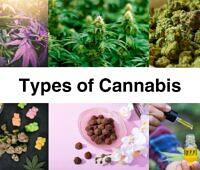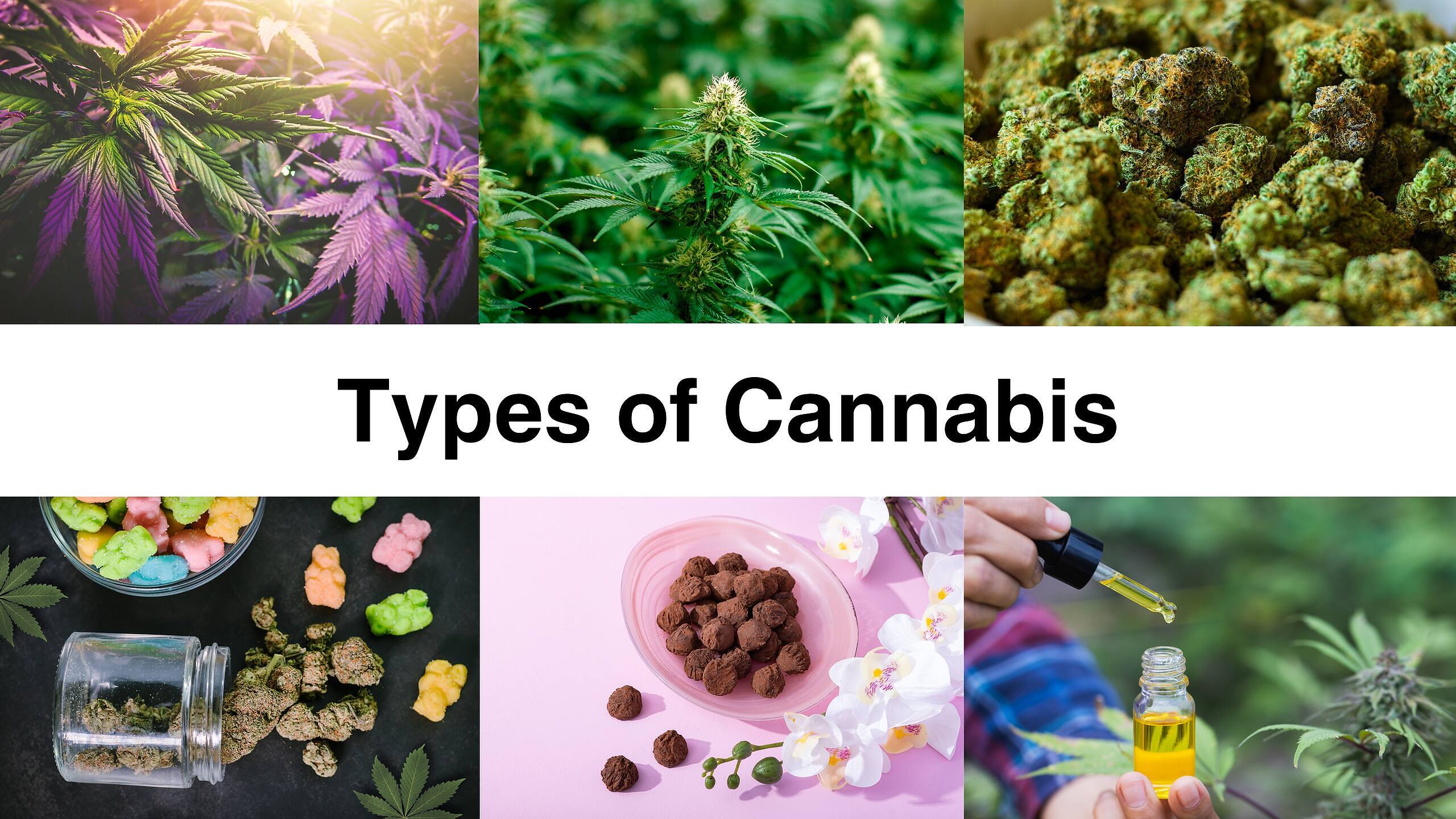
Types of Cannabis
What is Cannabis?
A type of flowering herb that is annual, meaning that it produces seeds each year and does not regrow in the original plant. Different types of cannabis are grown for varying purposes, including recreational drugs, medicinal treatments, food and hemp production.
Different Forms of Cannabis
Types of Cannabis Plants
C. Indica and C. Sativa are the main subspecies of cannabis plants. There are others, such as C. Ruderalis, and many hybrid forms of plants, that vary in value and distribution. They come in different variations that have been bred for specific qualities, specifically cannabinoids.
Cannabinoids vary in their effect on people, and not all are psychoactive (providing a high). C. Sativa has higher levels of THC, which leads to an energizing effect when it is consumed. C. Indica has more CBD and is more relaxing when taken. Indica is more commonly used to treat chronic pain and neuropathy.
Hybrid Cannabis Plants
Hybridisation in plants is used to selectively pollinate plants that have desirable features. For example, if you found that two plants (one male and one female) in your greenhouse have very high levels of THC.
The majority of hybridized cannabis plants are created in order to cultivate a higher THC content. This should mean that the high when taking the drug is stronger. Higher potency cannabis may increase revenue for producers, but taking these hybrid forms can be dangerous. Studies show that high levels of THC can cause:
- Cognitive impairment
- Psychosis
- Chronic lack of motivation
- Increased risk of suicide
- Addiction
Cannabis Strains
Cannabis strains are often talked about even though botany does not accept it as an official term when it comes to plants. It is used to describe a group of plants that come from breeding or artificially introducing certain characteristics.
This means that there are a large number of names for ‘strains’ of cannabis. These are usually deliberately cultivated to emphasise certain components. Mostly, this will be the level of THC (tetrahydrocannabinol) vs. CBD (cannabidiol).
However, these are not really strains so much as labels for varieties. Realistically it is more of a marketing angle than a scientific classification. From a sales perspective, the end products will be designed for their target market, prioritizing the cannabinoid with the desired effect.
Cannabis Products
The final product of growing and producing cannabis comes in several forms for human consumption, legal or illegal.
Hash
The resin form is produced by compressing or purifying the stalks and ends in cannabis flowers. Hash can vary enormously in its strength and can be made from leftovers of smoking stronger cannabis or produced in a laboratory.
Hash looks like brown semi-solid resin, similar to a bar of soap. It varies in price greatly depending on strength and what other ingredients it contains. It can be burnt into a cigarette or bong or occasionally melted into food.
Marijuana
The raw plant form of cannabis is normally not processed in any way. The buds of the flowers might be sold whole or the ‘grass’ portion may be pulled out and sold. This kind of cannabis is usually smoked or eaten.
How to Identify Types of Cannabis
Visually, you can easily tell the difference between marijuana and hash. Marijuana is buds or grass-like strands, whereas hash is a soap-like bar or ball of brown resin.
It is very difficult to determine the strength of hash from the outside and only analysis or experience can tell you this information.
Recognising the different kinds of marijuana from specifically bred plants is difficult. Indica are usually denser and heavier, whereas sativa is longer and narrower with less densely packed leaves.
Some are distinctive, such as purple kush, which is purple in the flowers, but in most cases, they are hybridized and, therefore, very difficult to identify.
Different Ways of Taking Cannabis
The methods of taking cannabis vary, so it can help to know what you are looking out for. The way someone takes cannabis may determine what paraphernalia they have and what form they buy.
Smoking
By far, the most common way of taking cannabis is by inhaling it by smoking. This can be in a joint with or without tobacco, with a vape, bag or in a bong. The THC passes through the lungs and into the bloodstream, causing a feeling of being high often immediately.
The actual cannabis is usually mixed in with tobacco or vape fluid. Commonly used types of cannabis are hash and marijuana flowers.
Hash is a more concentrated resin, and the flowers are taken directly from the plant and dried. Hash is usually more potent, although this depends on the producer and method of producing it.
Smoking cannabis is considered one of the riskiest as it can damage your lungs and heart, especially when mixed with tobacco. It is also a higher risk for over-intoxication, particularly when mixed with other substances such as alcohol and other drugs.
Eating
The slower release of the psychoactive ingredients in cannabis has led to many people using the drug recreationally or medicinally by cooking it in food. Typically, it is baked or brewed into sweet foods to manage the bitter taste and offer additional energy through sugar. People use all types of cannabis to cook in different concentrations.
CBD oil, when it is consumed alone without THC, can be taken in drinks, gummies, drops and capsules. Unlike products containing THC, CBD at the right level is legal and doesn’t require a prescription in the UK.
Are Some Types of Cannabis More Addictive?
Certain types of cannabis have no psychoactive components, and so are not addictive. CBD oil in pure form is not habit-forming or addictive.
The stronger the level of THC, the more addictive cannabis use will be. It is also linked to how young you are when you start taking THC-containing products and how extensively you use them. Around 10% of people who take cannabis regularly will become physically addicted to it.
Physical addiction is distinct from psychological addiction or dependence. With a physical addiction, you will experience symptoms such as sweating, stomach pain, nausea and headaches.
Psychological addiction or dependence is more likely to cause cravings, insomnia and depression. This is also made worse by higher levels of THC but not as consistently as with physical addiction. Using progressively more can lead to psychological issues such as amotivation, depression and even psychosis.
Help with Cannabis Addiction
Dealing with a cannabis addiction can be challenging. The drug is widespread, and many people believe it is not actually addictive and, therefore, don’t take dependence seriously. It is common in younger people, and social pressure is rife in all walks of life.
Cannabis rehab is an option for people who are truly addicted to THC and experience withdrawal. A medical detox can support you during withdrawal, and counselling in rehab will help you understand the psychological features of your cannabis addiction. Call us or chat to an advisor for help with cannabis rehab near you.





